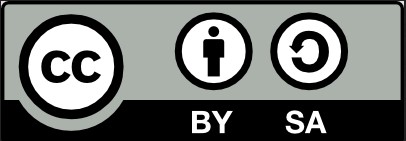Abstract | Background | Objectives | Result: Competence Matrix (Workpackage 2) | Result: Sustainable Matrix (Workpackage 3) |
Result: Training Occupations (Workpackage 4) | Result: Learning Modules (Workpackage 5) | Partnership | Transnational Activities |
Impact | Dissemination
GeTinVET - Europe-wide comprehensible competence matrix for the entire field of Service Building Engineering (WP 2)
The main objective of work package 2 was to create a description of the field of Service Building Engineering in the form of a competence matrix that is understandable throughout Europe and corresponds to the current professional requirements. The matrix serves as an initial framework to...
- map competences that are necessary for a holistic view of building complexes and further identify interfaces between occupations from initial VET connected with Building Service Engineering.
- to develop the interdisciplinary learning modules for trainees.
- to make learning outcomes visible in a comprehensible way throughout Europe.
Main results of work package 2:
1. "Glossary of Terms"
Equal understanding with regard to terminology in the field of activity Building Service Engineering. Before starting to work on the competence matrix, important terms were clarified in order to create a common understanding of the project.
Glossary_of_terms_italian.pdf
Glossary_of_terms_lithuanian.pdf
2. Questionnaire for the empirical investigation of the current qualifications in the field of activity Building Service Engineering (Europe-wide)
The questionnaire for the empirical study was divided into 3 sections. The first section dealt with general questions about the type, sector and location of the company. The second section related to the importance of networking and co-operation between different trades in building services engineering. The third section dealt with the significance of special professional situations for professional practice and the core work processes in building service engineering. A total of 138 companies in the participating partner countries were surveyed. The questionnaires were translated into the respective national languages of the participating countries. The survey was conducted by using google-forms.
Questionnaire_(German_Version).pdf
Questionnaire_(Spanish_Version).pdf
Questionnaire_(Lithuanian_Version).pdf
Questionnaire_(Finnish_Version).pdf
Questionnaire_(Dutch_Version).pdf
3. Evaluation and publication of the empirical study (+comments)
The questionnaire was extensively analyzed and evaluated and prepared for the creation of the skills matrix. The main findings confirmed that networking between the trades in the skilled crafts sector is highly relevant in practice. Interdisciplinary competences are becoming increasingly important in everyday working life. The relevance of professional action situations for professional practice was also confirmed. It is now also known which trades in the different countries work together with which other trades in different situations. The empirical study once again clearly confirmed the relevance of the project topic. The survey confirmed that over 90% of all companies surveyed already work together with other trades and that meaningful networking with other trades brings benefits for the companies surveyed. A lack of education and a lack of suitable skilled labour were cited as the biggest obstacles in this regard. This once again confirmed the relevance of the project topic for vocational training!
Analysis_investigation_interdisciplinarity.pdf
Core_results.pdf
All_results.xlsx
4. Competence Matrix for the field of Building Service Engineering (VQTS-Model)
The competence matrix for the field of Building Service Engineering is the result of a pan-European empirical study of operational practice. From this, a total of 10 core work processes were identified on the vertical axis and the competences required for these were described as units of learning outcomes. The entire matrix relates to EQF levels 3 - 6. The level of requirement of the matrix increases horizontally and, with regard to core work processes 1 to 7, also vertically. Core work processes 1 to 7 relate to classic core competences in Building Service Engineering. Core work processes 8 to 10, on the other hand, are to be understood more as cross-activity areas of expertise that are particularly important for adaptation processes in the context of interdisciplinary cooperation. The units in the matrix are formulated in general terms and can therefore be related to different occupational fields that have cross-sectional competences in Building Service Engineering.
5. A commented evaluation on the use of the project results of work package 2.
The usability of the results was evaluated internally at the 2nd project meeting. At and after the project meeting, the competency matrix was mainly discussed, commented on by the partners and transferred into the final version to date.
Funded by the European Union. Views and opinions expressed are however those of the author(s) only and do not necessarily reflect those of the European Union or the European Education and Culture Executive Agency (EACEA). Neither the European Union nor EACEA can be held responsible for them. |
This work is licensed under a Creative Commons Attribution-ShareAlike 4.0 International License. |

